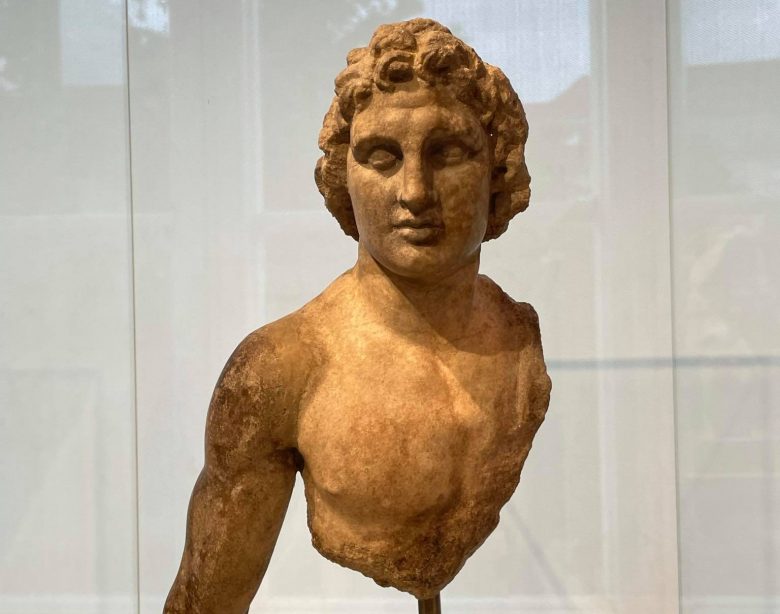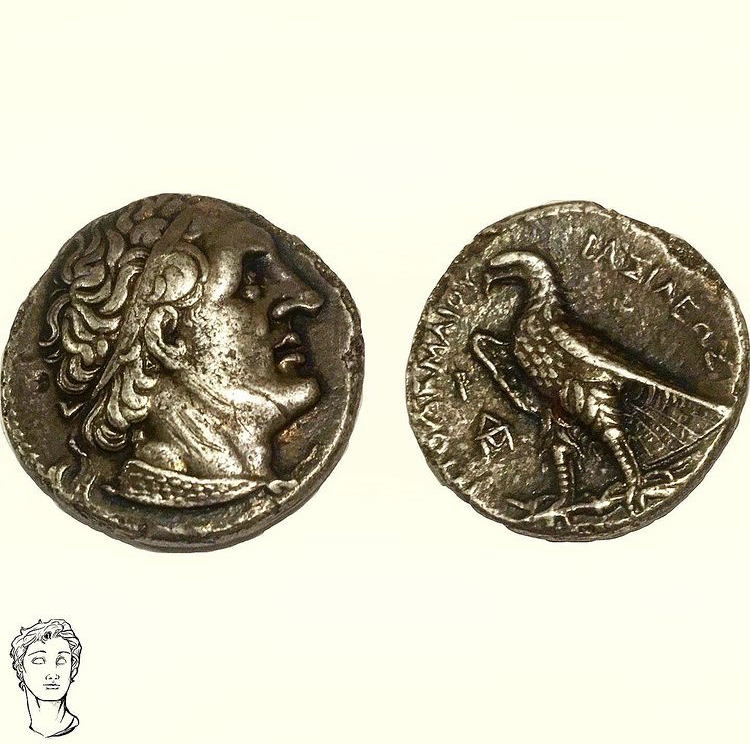When I visit one of the great archaeological museums of Europe, I always look for two things: how many busts of Alexander the Great are there, and which Greek coins are on display? So when I was at the Altes Museum in Berlin last week, I noticed that whenever Alexander the Great is represented in archaeological and numismatic sources, there are references to mythology and divine elements. As we have already seen, the use of mythology was an important element in Alexander’s politics. We now know that he claimed to be descended from two Greek heroes: Achilles on the mother’s side and Heracles on the father’s. References to this mythological lineage are not only found in written sources. This month, therefore, we turn our attention to the representation of Alexander in sculpture and to the coins issued in his name.

There are several busts and statues of Alexander that have survived to this day, but how is he depicted? Alexander conquered the world at a young age and died before he was 35. The image of the young dynamic king – often with idealised facial features – was therefore the one most used by Hellenistic and Roman sculptors when depicting Alexander. A second striking element – which, incidentally, would have a great influence on later Hellenistic kings – is the fact that Alexander allowed himself to be depicted without a beard. His father, Philippus II, had chosen to follow the tradition of the Greeks and to be immortalised with a full beard. Alexander’s choice not to do this thus ensured on the one hand that he broke with the traditions of his father and at the same time allowed him to imitate young Greek heroes such as Heracles and Achilles or gods like Dionysus, who were often depicted without a beard. The connection to Herakles is even more obvious in a rather battered bust from the National Archaeological Museum in Athens where Alexander can be seen with the lion’s head on his head like his mythological ancestor.

The diadochoi or successors of Alexander eagerly followed his example and they too were often depicted young, idealised and with certain typical features. The most important element of a Hellenistic king’s image was the diadem. This was a thin band of white cloth worn on the head and, according to some, invented by the god Dionysus and symbolising the conquest of new territories. This association with Dionysus was important because as a god he had conquered the East, as had Alexander and his retinue. Other connections to Alexander and his divine ancestors were also imitated, for example, in the Louvre there is a bust of the formidable Roman enemy Mithradates VI on which he is wearing a lion’s head. A clear reference to Alexander’s Heraklian ancestry.
 Besides the marble heads and statues of Alexander, he was also posthumously immortalised on the coins of some of his successors. On a silver tetradrachm struck during the reign of Lysimachos between 308 and 281 BC, the head of Alexander can be seen. It is striking that, in addition to the typical Hellenistic diadem, the Macedonian king also clearly has horns on his head, a clear reference to the Egyptian son Ammon, of whom Alexander also claimed to be the son. Another important coin associated with Alexander and very well known are the so-called Herakles coins. These were minted by both Alexander himself and posthumously in his name by his successors. The silver coins show Alexander’s ancestor Heracles on the obverse, easily recognised by the lion skin on his head. On the reverse, the Greek supreme god Zeus is shown, who, as the father of Heracles, also has a direct connection to Alexander.
Besides the marble heads and statues of Alexander, he was also posthumously immortalised on the coins of some of his successors. On a silver tetradrachm struck during the reign of Lysimachos between 308 and 281 BC, the head of Alexander can be seen. It is striking that, in addition to the typical Hellenistic diadem, the Macedonian king also clearly has horns on his head, a clear reference to the Egyptian son Ammon, of whom Alexander also claimed to be the son. Another important coin associated with Alexander and very well known are the so-called Herakles coins. These were minted by both Alexander himself and posthumously in his name by his successors. The silver coins show Alexander’s ancestor Heracles on the obverse, easily recognised by the lion skin on his head. On the reverse, the Greek supreme god Zeus is shown, who, as the father of Heracles, also has a direct connection to Alexander.

This brief overview shows that the way Alexander was depicted – both himself and by others – was permeated with references to his mythological origin and divine status as the son of Zeus-Ammon. Moreover, the traditions started under Alexander were carried on by the various Hellenistic kingdoms. It is clear, then, that the link between mythology and politics is not only to be found in diplomatic relations but can also be drawn further to visual representations of Alexander.


 This is already the seventh post in a series of twelve which dives into the ways in which the ancient Greeks used their mythological past as a diplomatic tool in their relationships with others. This series is written in collaboration with
This is already the seventh post in a series of twelve which dives into the ways in which the ancient Greeks used their mythological past as a diplomatic tool in their relationships with others. This series is written in collaboration with 

